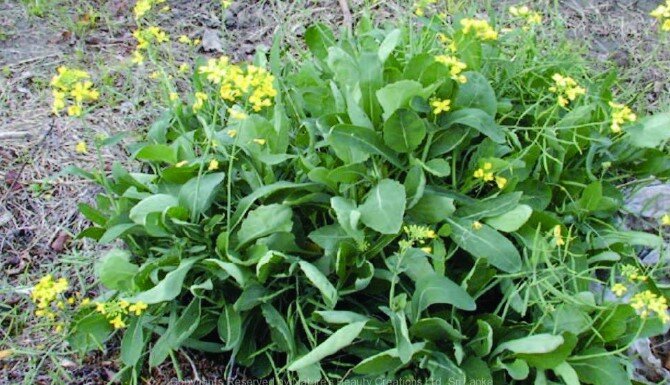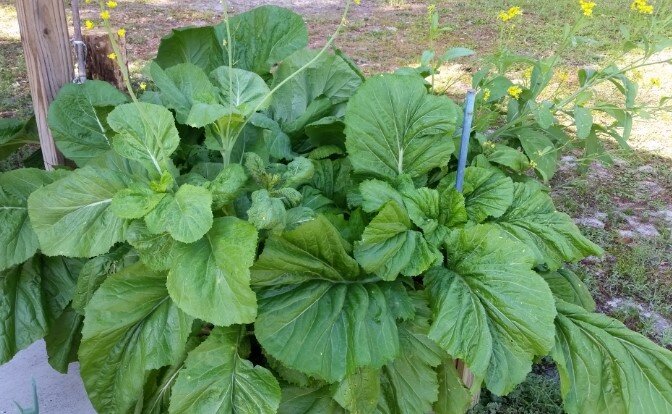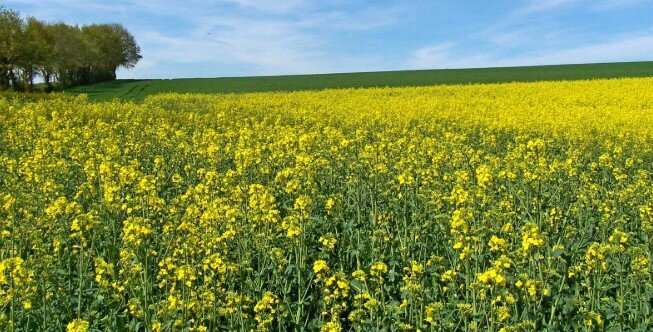Bunnies can eat mustard greens. However, since it is high in oxalic acid while preparing your leafy greens for your rabbits, which should have several vegetables (4-6), don’t include any other that is high in oxalic acid.
Therefore, avoid other veggies high in oxalic acid, including parsley, spinach, mustard greens, beet greens, Swiss chard, radish tops, sprouts below six days.
Instead, mix it with other leafy greens low in oxalic acid such as kale, romaine lettuce, Frisee lettuce, spring greens, turnip greens, carrot tops, arugula, chicory, cilantro, radicchio, watercress, wheatgrass, dill leaves, dandelions greens, mint, basil, and so forth.

Also, a rule of the thumb, fresh plants should account for 10-15% of their daily food portion while grass hay accounts for not less than 80%, and the remainder should be high fiber pellets.
Feeding lots of fresh plants may cause stomach troubles since they are low in fiber, while fiber helps in promoting digestion.
Finally, don’t forget to start offering this plant or any other gradually as you see if they don’t cause any tummy issues. Also, your source should be free of any herbicides and pesticides.
Dangers of oxalates
Plants with high oxalates or oxalic acid are not the best for your furry friend and many other animals. These compounds bind with mineral in the stomach reducing their bioavailability. For instance, it will bind with iron to form iron ferrous.
Secondly, they will worsen urinary calcium stones (uroliths) by binding with calcium. Avoid any foods high in oxalic acid if your bunny has calcium uroliths problem.
More about this plant
The two species of this plant are the Brassica juncea, and Sinapis hirta which happen to be from different genera.
1. Brassica juncea
This species is commonly known as oriental, brown, Indian, leaf, Chinese, or vegetable mustard. It is native to Himalayan foothills. However, the US, the UK, India, Denmark, Canada, among other places, grow it. Common cultivars include:
- Integrifolia or leaf: It has leaf (small gai Choy, bamboo, or cabbage mustard), Korean red, Japanese giant red, snow, curled leaf (American, Southern, Texas or Southern curled), cut-leaf (mizuna), large petiole (horned, head) mustard
- Juncea – oilseed or canola (Indian, brown or oilseed)
- Napiformis –It has the root, large root, tuberous or turnip root mustard
- Tsatsai – multi-shoot and zha cai.
The leaves, stems, and seeds of this cultivar are edible, and in some places, it serves as green manure as well as in phytoremediation or removal of heavy metals.

2. Sinapis hirta
Also known as white mustard, Brassica alba, or B. hirta, this species has yellow flowers and hairy seed pods. Naturally, in the wild, it grows in North Africa, the Mediterranean, and the Middle East.
Its cultivation is mainly for its seeds. However, it serves as a green mature and fodder crop.

Nutrition
Mustard greens are rich in vitamins C, K, as well as vitamin A (beta-Carotene and lutein zeaxanthin). Also, it has considerable amounts of calcium, magnesium, iron, phosphorus, % water. Therefore, your rabbits have a lot to benefit from this vegetable.
